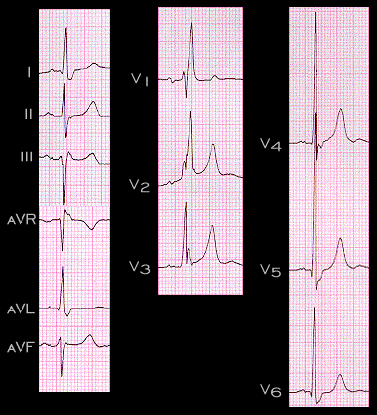
As mentioned above, the initial and mid portions of the QRS complex, i.e. those representing septal and left ventricular depolarization, are not altered by the development of RBBB. Because of this, they are influenced by diseases that affect these portions of the electrocardiogram in much the same way that they would be if RBBB were not present. This ECG shows RBBB. It is from a 75 year old patient with long-standing hypertension. Note the features of the various components of the QRS complex in the limb (frontal plane) and chest (horizontal plane) leads and the unopposed right ventricular forces.
